Weekend Wanderlust: A perfect 24 hours in Trieste
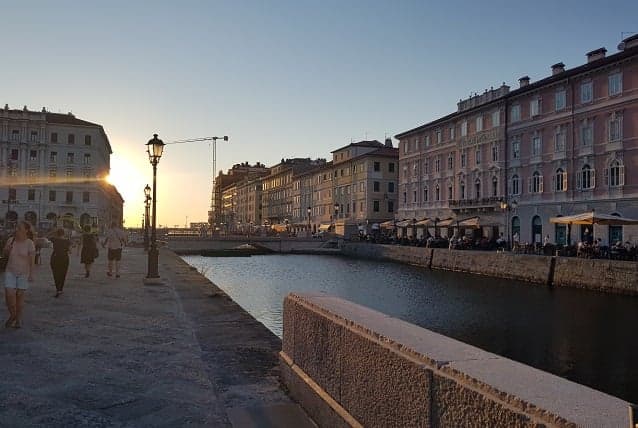
Trieste's location near the Slovenian border, and a rich history which has seen periods of Roman, Byzantine, Venetian and Austro-Hungarian rule, have resulted in a fascinating mix of cultures which has served to attract traders and artists to the north-eastern city over the centuries.
Even its climate is unusual. The sharp winds known as the Bora can get dangerously fast, and are said to be the reason the locals are so passionate.
The city is best known for its cafe culture and literary history, and in fact the two are intertwined. There's a museum dedicated to James Joyce, who spent a decade here and you can visit the Caffè Stella Polare where he supposedly started writing Dubliners. Over at the elegant Caffè San Marco, local writer Italo Svevo created perhaps his best known novel, The Conscience of Zeno and where he, Joyce, and other writers and intellectuals would meet during the early 20th century.
Exploring is rewarded in Trieste, and a visit should start in the Austrian quarter, taking in the grandeur of the huge Piazza Unità which opens out to the sea. Not far away, you can explore the Canal Grande district, popping into any shops that take your fancy -- bookworms should take a look into Libreria Umberto Saba or Libreria Minerva, and it's a good area to return to later on for dinner or drinks.
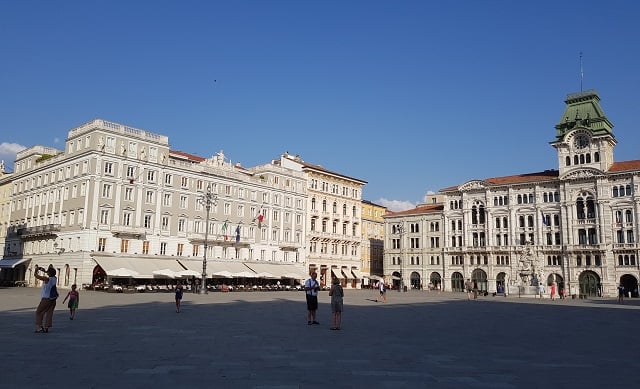
Photo: Catherine Edwards
The cultural mishmash means you'll find different architectural styles and places of worship for multiple religions: the Serbian Orthodox Saint Spryridon Church and the synagogue are two highlights close by.
Heading further inland, there's a choice of museums, such as the small, free Museum of History and Art - Orto Lapidary, and the Museum Revoltella, an impressive art gallery in a grand palazzo.
Two spots you should make sure to fit into your walking tour are the ruins Arco di Riccardo and old Roman amphitheatre, which once looked out over the sea but today lies in the heart of the city. Nearby Gelato Marco is one of the best gelaterias in the city -- try one of their specially created flavours such as Aperol Spritz or a seasonal option.
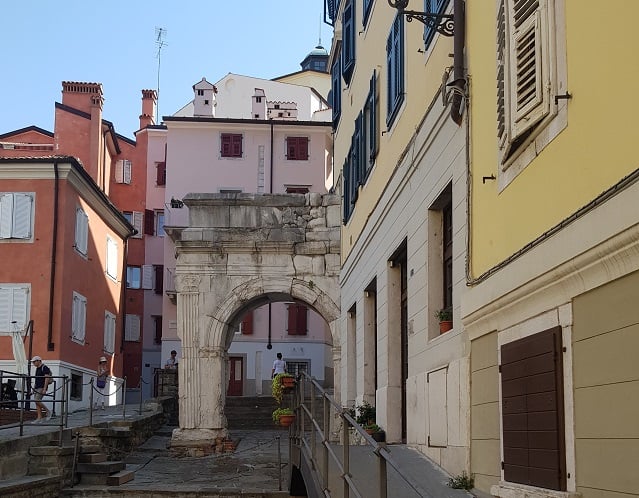
Photo: Catherine Edwards
At some point, it will be time for coffee. Trieste is the home of Italian brand Illy and the city's combination of Italian and eastern European influences make this one of the best places to get a pastry. Just be aware that they do coffee slightly differently here: an espresso is a nero, a caffe macchiato is a capo, unless it's served in a glass in which case it's a capo in b, and a goccia is an espresso with a dash of frothed milk.
The elegant (and expensive) Caffe degli Specchi, Caffe Tommaseo, or Caffe San Marco are places to go if you want to soak up history in the spots that hosted the likes of Joyce and Svevo. Alternatively, Lettera Viva is a more low-key but still beautiful spot to while away an afternoon with one of the books on their shelves and perhaps one of their cakes.
After the pausa caffe, it's time to climb the hill up the so-called Scala dei Giganti or Giant's Staircase (for anyone with mobility issues, there's also an elevator from the car park by the Roman theatre) to discover views over the city, the Castle of San Giusto and Trieste Cathedral with its mosaics and a bell tower you can climb. For even more impressive views, if you've got the time and energy it's worth going to Opicina to hike the five-kilometre Napoleonic Way, or just a stretch of it.
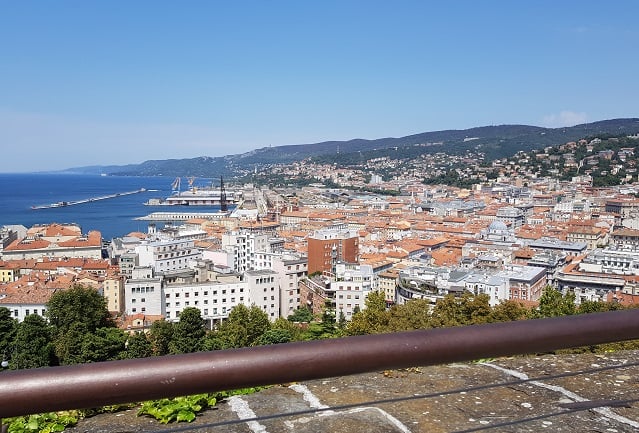
Photo: Catherine Edwards
In the evening, return to the city centre and find somewhere to eat (Al Bagatto is a favourite for seafood or Buffet Marascutti for typical Trieste dishes), before a drink in the Canal Grande district and finishing the day with a walk along the waterfront as the sun sets.
This itinerary will give you a good introduction to Trieste, but if you have more than a day, there are multiple rewarding day trips in the surrounding area, with different options to suit all preferences.
The most popular excursion is to Miramare Castle; this impressive white palace and its gardens are a highlight of the region for many, and can be reached by bus. Walkers following the Napoleonic Way can also reach it from Prosecco, the end point of the walking route.
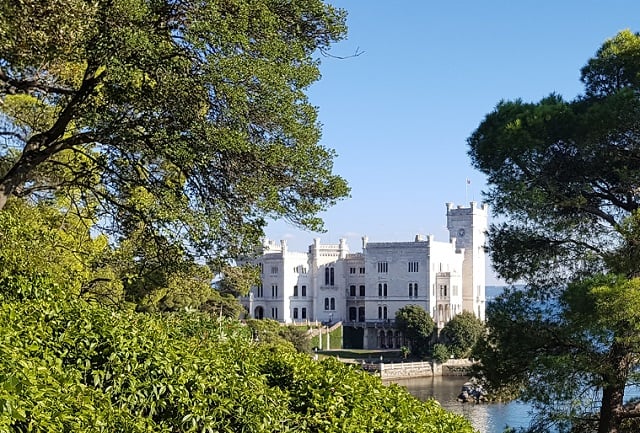
The Castello Miramare. Photo: Catherine Edwards
A visit to the Risiera di San Sabbia, just a short bus ride from central Trieste, will teach you about a dark chapter in Italy's past. Nazi forces took over this former rice mill and used it as a concentration camp; the only one in Italy with a crematorium. An estimated 3,000 people were killed here during the Second World War, and the museum also includes an exhibition including personal belongings of those interned here. Entry is free but the two-euro audio guide will help you better understand the history of the site.
For a less sombre half-day trip, head to the star-shaped fortress town of Palmanova. It was built as an "ideal city" during the Renaissance period in Italy and is a great off-the-beaten-track destination, despite recently obtaining Unesco status.
Alternatively, take a ferry ride (or the bus, outside the summer season) to the sleepy but picturesque fishing town of Muggia and explore its narrow and colourful streets, climb up to its castle for the views, or simply relax near the shore and enjoy a seafood dish.
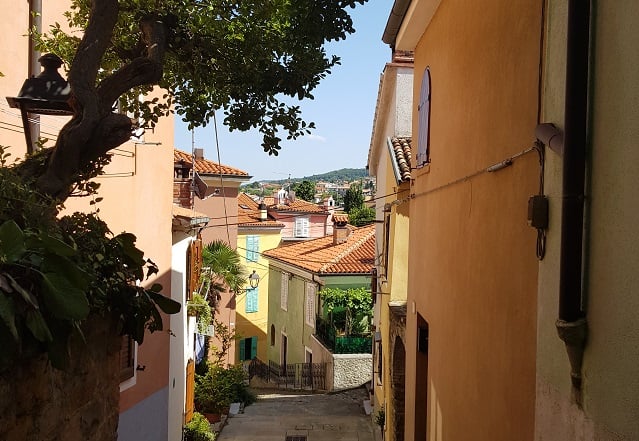
Trieste languishes far down on many travellers' must-visit lists in Italy, but this city rewards those who make the effort.
And it might take less effort than you'd think; despite being somewhat geographically isolated from the rest of the country, Trieste is located conveniently for a stop on the way to Slovenia or Croatia, and can also be combined with a Venice visit -- it's around 90 minutes away by train.
Comments
See Also
Even its climate is unusual. The sharp winds known as the Bora can get dangerously fast, and are said to be the reason the locals are so passionate.
The city is best known for its cafe culture and literary history, and in fact the two are intertwined. There's a museum dedicated to James Joyce, who spent a decade here and you can visit the Caffè Stella Polare where he supposedly started writing Dubliners. Over at the elegant Caffè San Marco, local writer Italo Svevo created perhaps his best known novel, The Conscience of Zeno and where he, Joyce, and other writers and intellectuals would meet during the early 20th century.
Exploring is rewarded in Trieste, and a visit should start in the Austrian quarter, taking in the grandeur of the huge Piazza Unità which opens out to the sea. Not far away, you can explore the Canal Grande district, popping into any shops that take your fancy -- bookworms should take a look into Libreria Umberto Saba or Libreria Minerva, and it's a good area to return to later on for dinner or drinks.

Photo: Catherine Edwards
The cultural mishmash means you'll find different architectural styles and places of worship for multiple religions: the Serbian Orthodox Saint Spryridon Church and the synagogue are two highlights close by.
Heading further inland, there's a choice of museums, such as the small, free Museum of History and Art - Orto Lapidary, and the Museum Revoltella, an impressive art gallery in a grand palazzo.
Two spots you should make sure to fit into your walking tour are the ruins Arco di Riccardo and old Roman amphitheatre, which once looked out over the sea but today lies in the heart of the city. Nearby Gelato Marco is one of the best gelaterias in the city -- try one of their specially created flavours such as Aperol Spritz or a seasonal option.

Photo: Catherine Edwards
At some point, it will be time for coffee. Trieste is the home of Italian brand Illy and the city's combination of Italian and eastern European influences make this one of the best places to get a pastry. Just be aware that they do coffee slightly differently here: an espresso is a nero, a caffe macchiato is a capo, unless it's served in a glass in which case it's a capo in b, and a goccia is an espresso with a dash of frothed milk.
The elegant (and expensive) Caffe degli Specchi, Caffe Tommaseo, or Caffe San Marco are places to go if you want to soak up history in the spots that hosted the likes of Joyce and Svevo. Alternatively, Lettera Viva is a more low-key but still beautiful spot to while away an afternoon with one of the books on their shelves and perhaps one of their cakes.
After the pausa caffe, it's time to climb the hill up the so-called Scala dei Giganti or Giant's Staircase (for anyone with mobility issues, there's also an elevator from the car park by the Roman theatre) to discover views over the city, the Castle of San Giusto and Trieste Cathedral with its mosaics and a bell tower you can climb. For even more impressive views, if you've got the time and energy it's worth going to Opicina to hike the five-kilometre Napoleonic Way, or just a stretch of it.

Photo: Catherine Edwards
In the evening, return to the city centre and find somewhere to eat (Al Bagatto is a favourite for seafood or Buffet Marascutti for typical Trieste dishes), before a drink in the Canal Grande district and finishing the day with a walk along the waterfront as the sun sets.
This itinerary will give you a good introduction to Trieste, but if you have more than a day, there are multiple rewarding day trips in the surrounding area, with different options to suit all preferences.
The most popular excursion is to Miramare Castle; this impressive white palace and its gardens are a highlight of the region for many, and can be reached by bus. Walkers following the Napoleonic Way can also reach it from Prosecco, the end point of the walking route.

The Castello Miramare. Photo: Catherine Edwards
A visit to the Risiera di San Sabbia, just a short bus ride from central Trieste, will teach you about a dark chapter in Italy's past. Nazi forces took over this former rice mill and used it as a concentration camp; the only one in Italy with a crematorium. An estimated 3,000 people were killed here during the Second World War, and the museum also includes an exhibition including personal belongings of those interned here. Entry is free but the two-euro audio guide will help you better understand the history of the site.
For a less sombre half-day trip, head to the star-shaped fortress town of Palmanova. It was built as an "ideal city" during the Renaissance period in Italy and is a great off-the-beaten-track destination, despite recently obtaining Unesco status.
Alternatively, take a ferry ride (or the bus, outside the summer season) to the sleepy but picturesque fishing town of Muggia and explore its narrow and colourful streets, climb up to its castle for the views, or simply relax near the shore and enjoy a seafood dish.

Trieste languishes far down on many travellers' must-visit lists in Italy, but this city rewards those who make the effort.
And it might take less effort than you'd think; despite being somewhat geographically isolated from the rest of the country, Trieste is located conveniently for a stop on the way to Slovenia or Croatia, and can also be combined with a Venice visit -- it's around 90 minutes away by train.
Join the conversation in our comments section below. Share your own views and experience and if you have a question or suggestion for our journalists then email us at [email protected].
Please keep comments civil, constructive and on topic – and make sure to read our terms of use before getting involved.
Please log in here to leave a comment.